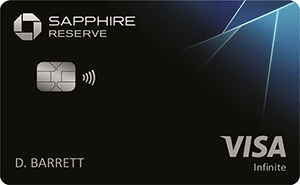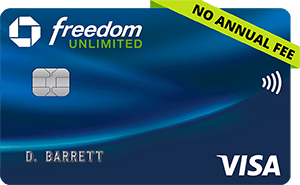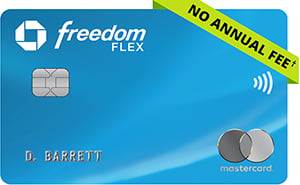Chase Sapphire Preferred vs. Sapphire Reserve: Reserve Dethroned
For casual and heavy travelers alike, the Chase Sapphire Preferred is a better all-around package.

Many or all of the products on this page are from partners who compensate us when you click to or take an action on their website, but this does not influence our evaluations or ratings. Our opinions are our own.
★ LIMITED TIME OFFER
Heads up! For a limited time, the Chase Sapphire Preferred® Card is offering one of its most lucrative sign-up bonuses ever — 100,000 points that can be worth well over $1,000 when redeemed for travel. The issuer spells it out like this: Earn 100,000 bonus points after you spend $5,000 on purchases in the first 3 months from account opening. Learn more and apply here.
For frequent travelers, the Chase Sapphire Reserve® packs in plenty of value with its high rewards rate, top-notch benefits and sign-up bonus, even with its annual fee of $550. The card debuted in 2016 to much fanfare — and Chase even ran out of the metal credit cards when supply couldn’t keep up with demand.
For years, the Chase Sapphire Reserve® was actually a surprisingly more cost-effective choice than its $95-annual-fee sibling, the Chase Sapphire Preferred® Card. That’s because the card’s generous credits and perks outweighed the fee for many.
But now, thanks to a refresh of the Chase Sapphire Preferred® Card and an annual fee increase for the Chase Sapphire Reserve® (it jumped from $450 to $550 in 2020), the Chase Sapphire Preferred® Card emerges the victor for many cardholders.
Here’s why there's a new winner.
on Chase's website
on Chase's website
Earn 100,000 bonus points after you spend $5,000 on purchases in the first 3 months from account opening.
Earn 60,000 bonus points after you spend $5,000 on purchases in the first 3 months from account opening.
5 points per $1 spent on all travel booked through Chase.
3 points per $1 spent on dining (including eligible delivery services and takeout).
3 points per $1 spent on select streaming services.
3 points per $1 spent on online grocery purchases (not including Target, Walmart and wholesale clubs).
2 points per $1 spent on travel not booked through Chase.
1 point per $1 spent on other purchases.
Through March 2025: 5 points per $1 spent on Lyft.
Points are worth 1.25 cents apiece when redeemed for travel through Chase.
10 points per $1 spent on Chase Dining purchases.
10 points per $1 spent on hotel stays and car rentals booked through Chase.
5 points per $1 spent on air travel booked through Chase.
3 points per $1 spent on travel and dining not booked with Chase.
1 point per $1 spent on other purchases.
Through March 2025: 10 points per $1 spent on Lyft.
Points are worth 1.5 cents apiece when redeemed for travel through Chase.
A $50 annual credit on hotel stays booked through Chase.
Each account anniversary, cardmembers will earn bonus points equal to 10% of total purchases made the previous year.
1:1 transfer partners, including United, Southwest, JetBlue, Marriott and Hyatt.
$300 annual credit, automatically applied to travel spending.
1:1 transfer partners (same as the Chase Sapphire Preferred® Card).
Access to more than 1,000 airport lounges worldwide through Priority Pass Select.
Up to $120 reimbursement every four years for TSA PreCheck, Global Entry or NEXUS application fees charged to your card.
Access to “Reserved by Sapphire” restaurant-booking feature.
Why the Chase Sapphire Preferred® Card wins for most
More rewarding for most spending, with a kicker
While the Chase Sapphire Reserve® boasts a few eye-popping 10x-earning categories, the Chase Sapphire Preferred® Card earns more for popular everyday spending categories:
3 points per $1 spent on dining (including eligible delivery services and takeout).
3 points per $1 spent on select streaming services.
3 points per $1 spent on online grocery purchases (not including Target, Walmart and wholesale clubs).
The Chase Sapphire Reserve® earns the same 3 points per $1 spent on dining, but all streaming and grocery purchases will earn just 1 point per $1 spent.
The Chase Sapphire Preferred® Card also offers an interesting and potentially lucrative anniversary bonus each year that isn't found on the Chase Sapphire Reserve®. Each account anniversary, cardmembers will earn bonus points equal to 10% of total purchases made the previous year. That means $25,000 in spending will earn an additional 2,500 bonus points.
Adding authorized users won't cost anything
The Chase Sapphire Reserve® charges a $75 annual fee for each authorized user you add to the account. This isn’t unusual for luxury cards, but it changes the math if you’re looking to share the account with one or more people.
The Chase Sapphire Preferred® Card doesn’t charge for adding authorized users.
Lower annual fee
If you are unsure if you will use most of the benefits of the Chase Sapphire Reserve®, or you know you won't, it simply isn't worth the $550 annual fee — despite its superior ongoing rewards. The Chase Sapphire Preferred® Card will likely be a more cost-effective option, especially because it has the same 1:1 transfer partners as the Chase Sapphire Reserve®, a stronger sign-up bonus and an annual fee that is $455 cheaper than its counterpart.
Why you might want the Chase Sapphire Reserve® instead
Points are worth more when you book travel through Chase
Both cards offer rewards with plenty of versatility, allowing you to transfer points to some airlines and hotels — such as British Airways, United and Hyatt — at a 1:1 ratio. But if you book travel through Chase, you'll get 1.5 cents per point on the Chase Sapphire Reserve®, compared with 1.25 cents per point on the Chase Sapphire Preferred® Card.
$300 annual travel credit
Chase automatically applies this credit to any travel purchases you make with your card — including airlines, hotels, timeshares, campground fees and ferries, among other categories — effectively canceling out a large portion of its annual fee.
Once you factor in the $300 easy-to-use credit, the Chase Sapphire Reserve® has an effective annual fee of $250. If you redeem your points often at the heightened 1.5 cents per point value and use the other perks like lounges regularly, these benefits could outweigh the remaining fee.
Lounge access and other top-tier benefits
With the Chase Sapphire Reserve®, you get Priority Pass Select access to more than 1,000 airport lounges worldwide. That means you can relax in a comfy armchair before your flight and take advantage of free snacks and drinks. Chase Sapphire Reserve® cardholders also have access to Chase's Sapphire Lounge locations in select airports.
The card offers reimbursement every four years for the application fee Global Entry, TSA PreCheck or NEXUS, which can let you sail through customs or security lines on your next trip.
The Chase Sapphire Preferred® Card lacks these travel perks.
Which card should you get?
With its generous sign-up bonus, solid rewards for many everyday spending categories, anniversary bonus rebate, $50 annual hotel credit and double-digit annual fee, the Chase Sapphire Preferred® Card packs a powerful punch, even for frequent travelers.
That said, for those who spend and redeem frequently through Chase and use benefits like lounge access frequently, the long-term winner could be the Chase Sapphire Reserve®.
1.5%-5%
Cashback$250
1x-5x
Points100,000
Points1%-5%
Cashback$200
Find the right credit card for you.
Whether you want to pay less interest or earn more rewards, the right card's out there. Just answer a few questions and we'll narrow the search for you.






